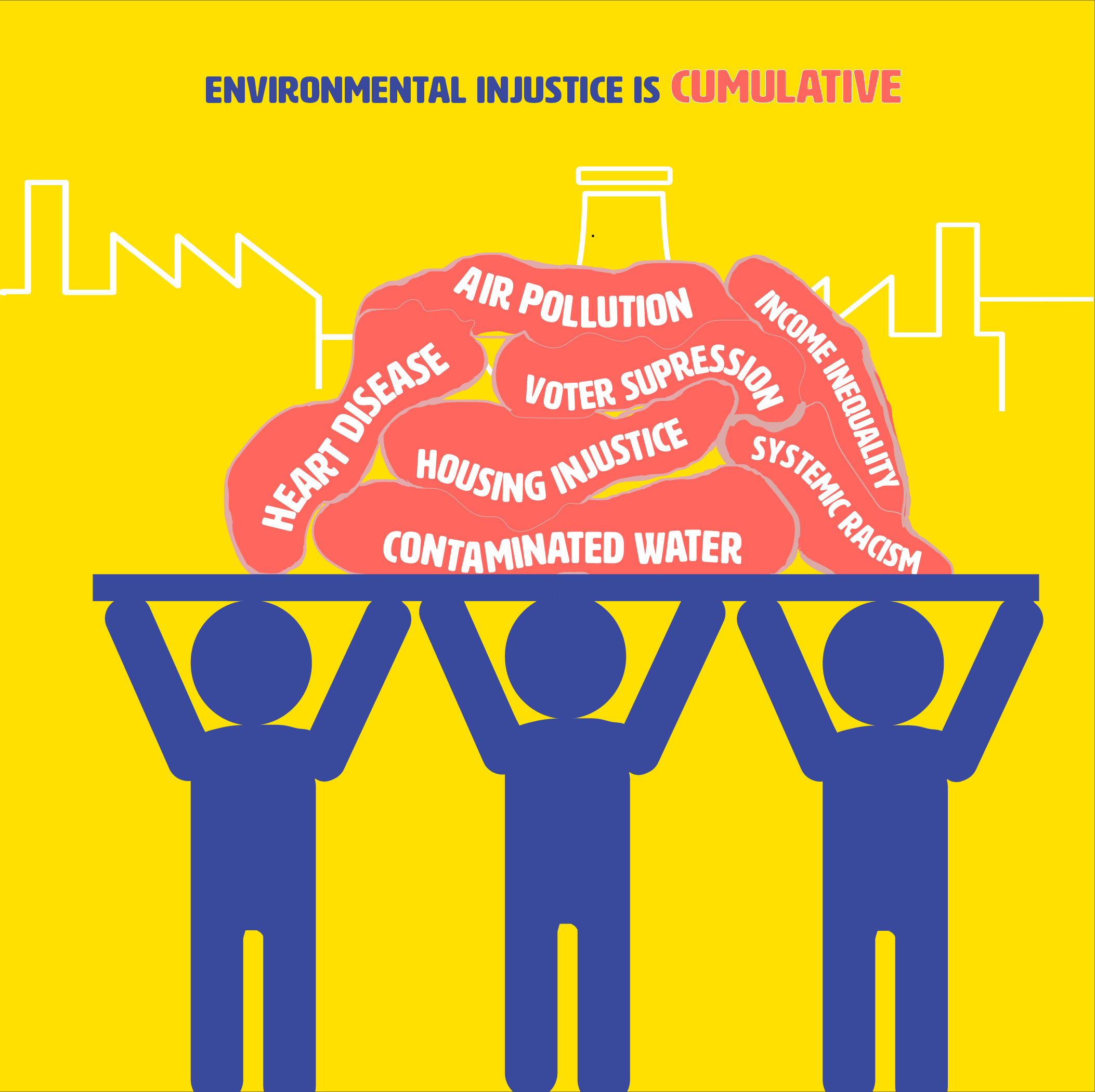NEW RESEARCH: UNDERSTANDING THE EVOLUTION OF ‘CUMULATIVE IMPACTS’ DEFINITIONS AND POLICIES IN THE U.S.
The issue of cumulative impacts (CI) has been a central focus of the environmental justice (EJ) movement for decades. Understanding cumulative impacts requires consideration of the complex interplay between socio-demographic, environmental, and public health factors that impact EJ communities. These communities are both more likely to be overburdened with pollution (higher vulnerability) and more likely to suffer severe impacts from pollution (higher susceptibility) . Yet advancing actions that address cumulative impacts in EJ communities has been challenging for a variety of reasons.
One of the key barriers to addressing CI in environmental decision-making is the narrow focus of existing environmental regulations that do not include an explicit mandate to consider multiple pollutants from multiple sources. There are gaps in our knowledge about how multiple pollutants interact with each other and impact public health under different conditions; and most environmental laws do not consider the socio-demographic and health disparities that impact EJ communities . Finally, one of the biggest obstacles to implementing a proactive approach to addressing CI has been the lack of political will to limit the activity of industry in EJ communities where cumulative impacts have traditionally been concentrated.
Nevertheless, in the past decade, EJ advocacy has pushed for increasing attention to CI in federal and state policies. During this time, a variety of CI definitions and methodologies evolved for application in agency guidance, public policies, and academic research. Furthermore, in recent years, various CI screening tools have been developed with the collaboration of diverse stakeholders, including EJ leaders, EJ scholars, and public sector researchers. These advancements have created momentum throughout the US to address the issue of cumulative impacts. The Tishman Center just released research aimed at supporting EJ movement stakeholders and policymakers with a searchable tool of definitions, indicators, thresholds, and benefits in the various CI policies developed to date. Please take a look at our Projects and Publications page for this research, or find it below.

